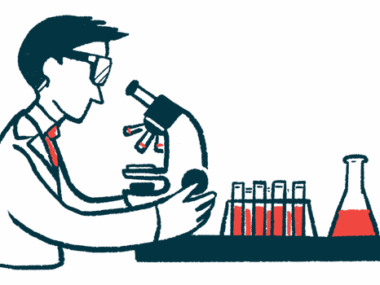Taysha regains full rights to TSHA-102 gene therapy for Rett
Early trial findings show improvements in motor, communication skills
Written by |

After expatriation of a partnership agreement with Astellas, Taysha Gene Therapies regained full rights to TSHA-102, its experimental gene therapy being developed to treat Rett syndrome.
“We are thrilled to regain full global rights to our lead TSHA-102 Rett syndrome program, which enables full strategic flexibility and optionality as we continue to advance the program and focus on driving long-term value,” Sean P. Nolan, chairman and CEO of Taysha, said in a company press release.
“We greatly appreciate the collaborative relationship we’ve had with Astellas, and the progress made to date across our TSHA-102 program, including recent clinical data further highlighting the therapy’s broad and consistent impact,” Nolan added.
Most cases of Rett syndrome are caused by mutations in the MECP2 gene. TSHA-102 delivers a shortened, but functional version of the gene to nerve cells, aiming to normalize MECP2 gene activity and address the underlying genetic defect that causes Rett. The therapy is given by a one-time administration into the spinal canal.
Early results from clinical trial are promising
Taysha is testing TSHA-102 in a Phase 1/2 clinical trial program called REVEAL. The program consists of a pediatric study (NCT06152237) in children ages 5 to 8 and an adult study (NCT05606614) in people 12 and older. So far, 10 participants have received the therapy in the first part of these studies. Interim data have indicated it led to improvements in motor, communication, and social skills.
“With an estimated 15,000 to 20,000 patients across the U.S., EU, and U.K. suffering from Rett syndrome, we believe the profound unmet medical need paired with the robust clinical data observed in Part A of our REVEAL trials highlight the significant market opportunity for TSHA-102,” Nolan said.
In 2022, Taysha and Astellas reached a deal where Astellas invested $50 million to support the development of Taysha’s gene therapies. In return, Astellas received 15% of Taysha’s common stock and options to potentially license gene therapies being developed by Taysha, including TSHA-102.
Under the terms of that agreement, Taysha presented Astellas with updated data from the REVEAL program. Astellas then had 90 days to negotiate for rights to the therapy.
That period has expired, meaning Taysha will regain full ownership of TSHA-102.
Earlier in 2025, Taysha finalized plans for the second part of the REVEAL program. The U.S. Food and Drug Administration (FDA) has signaled that positive findings from the second part of the study could support an application for the approval of TSHA-102.
In the second part of REVEAL, 15 females ages 6 to 21 will receive TSHA-102 at a single high dose of 1,000 trillion vector genomes. The goal will be to see if participants gain or regain at least one of 28 developmental milestones, spanning communication, fine motor, and gross motor function. Natural history data have indicated it’s extremely unlikely for Rett patients to gain or regain these specific milestones.
Recently, Taysha presented new data showing all 10 patients given TSHA-102 in the first part of REVEAL gained or regained at least one of the 28 milestones. Across the 10, a total of 22 milestones have been gained or regained. Participants have also shown improvements in other skills, with 165 additional improvements reported across the group.
“In addition to the developmental milestones achieved across the treatment cohort in Part A, patients consistently gained additional skills and improvements across core disease characteristics,” Sukumar Nagendran, MD, president and head of R&D at Taysha, said in a company press release discussing the new analyses. “We believe this reinforces the potential therapeutic impact of TSHA-102 on activities of daily living that are important to caregivers and clinicians.”
Nagendran added that the data “further underscores the potential consistency and breadth of TSHA-102’s impact across the core domains of Rett syndrome.”






